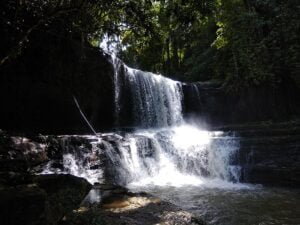No products in the cart.
Mizoram resounds with the Symphony of Music
MIZORAM
If you want to experience a unique tribal lifestyle and culture, while immersed in natural beauty, go to Mizoram
The Northeast’s ethnic diversity is at the heart of some of the most immersive cultural experiences for which India is renowned. The state of Mizoram reflects its determined efforts to cling to and preserve, the identity and culture of the Mizos, much as it did in the face of external divisive influences during the turbulent period after Indian independence.
An intrinsic part of this movement has been the YMA (Youth Mizo Association) which, with its presence in every major village across the state, has vigorously propagated the traditional Mizo lifestyle and customs in society. It’s interesting to note that Tlawmngaihn is a code of ethics that shapes the worldview of the Mizos. Centric to the code is the thought that everyone should be unselfish, hospitable, and helpful to each other.
Visitors will witness this in their visitor interface. The roots of the traditional Mizo lifestyle and customs still endure in the centuries-old pursuits of the community, be it in dance and music, ancestral crafts, culinary expressions, or spiritual leanings. An excellent platform for showcasing these are the numerous festivals that dot the state’s seasonal events calendar.

The state shares its borderlands with neighbours Manipur, Assam, and Tripura, with a thin sliver of land nestled between Myanmar and Bangladesh. The elevations of the smoky blue hills of Mizoram rise in a north-to-south direction from the plains of Cachar District in Assam. The highest pinnacle amongst the serried ranks of its bamboo-rich ridges stands Phawngpui—the Blue Mountain. Trekking through the jungle tracks visitors will marvel at the botanical diversity which features rare orchids, medicinal herbs, and ornamental flora in kaleidoscopic hues. Swathes of emerald paddy fields trawl the landscape from the alluvial Champhai Plains (east of the state capital Aizawl) to the Burmese (Myanmar) border.
Oral traditions kept alive the early history of the state, which witnessed the migration of the Mizo nomads from China looking for rich pasturelands in the late 17th century. On arrival at the lush Lushai Hills, they decided to make this pristine land their new home. In the 19th century under British rule, their land was annexed to neighbouring Assam in 1891 and came to be known as the Lushai Hill District.
An interesting cultural revolution of sorts started quietly taking place with the arrival and settling down of the Christian missionaries, who played a dominant role in westernizing the social mores of the native population. What separates the Mizo community apart from ethnic groups is their inborn love for music and song; it was the glue that bound the society together. One of the most enduring changes brought in with the adoption of Christianity by the locals is reflected in the state’s music culture, which though largely folk in nature, was pervaded by Western traditions of choral singing and hymn-singing and the introduction of musical instruments like the mouth organ and the guitar. Mizoram’s choirs today have gained international recognition.
Post-Independence Mizoram was declared a Union Territory in 1972 and in 1987 Mizoram (an amalgam of the former northern and southern Lushai Hill districts) became the 23 state of the Indian Union.
 Mizoram’s cross-cultural vibrancy, its high literacy levels, its dedication to gender equality, and rootedness in its ancient cultural traditions and social mores are its most alluring components for propelling its delights as a tourist hotspot. Some top attractions of the ‘Land of the Blue Mountain’ include Phawngpui, its highest peak, and a magnet for trekkers and adventure buffs; Saiha on the Chhimtuipui River, Mizoram’s biggest river, is an angler’s paradise; Dampa Tiger Reserve which straddles the borders of Mizoram, Tripura and Bangladesh; Champhai; Lunglei, Reiek Heritage Village and many more. Special treats include traditional festivals such as Chapchar Kut, Mim Kut, and Pawl Kut which also showcase the delights of Mizo culture. Try your hand, or rather feet at the famous Cheraw or bamboo dance, known for the dexterous footwork.
Mizoram’s cross-cultural vibrancy, its high literacy levels, its dedication to gender equality, and rootedness in its ancient cultural traditions and social mores are its most alluring components for propelling its delights as a tourist hotspot. Some top attractions of the ‘Land of the Blue Mountain’ include Phawngpui, its highest peak, and a magnet for trekkers and adventure buffs; Saiha on the Chhimtuipui River, Mizoram’s biggest river, is an angler’s paradise; Dampa Tiger Reserve which straddles the borders of Mizoram, Tripura and Bangladesh; Champhai; Lunglei, Reiek Heritage Village and many more. Special treats include traditional festivals such as Chapchar Kut, Mim Kut, and Pawl Kut which also showcase the delights of Mizo culture. Try your hand, or rather feet at the famous Cheraw or bamboo dance, known for the dexterous footwork.
Aizawl the state capital is connected by air to Kolkata and Guwahati; Silchar is the nearest railhead. Aizawl also had good road links via Silchar to Guwahati, Imphal, Kohima, Shillong, and Agartala. An Inner Line Permit can be obtained from Liaison Officers posted in New Delhi, Kolkata, Guwahati, Shillong, and Silchar
















